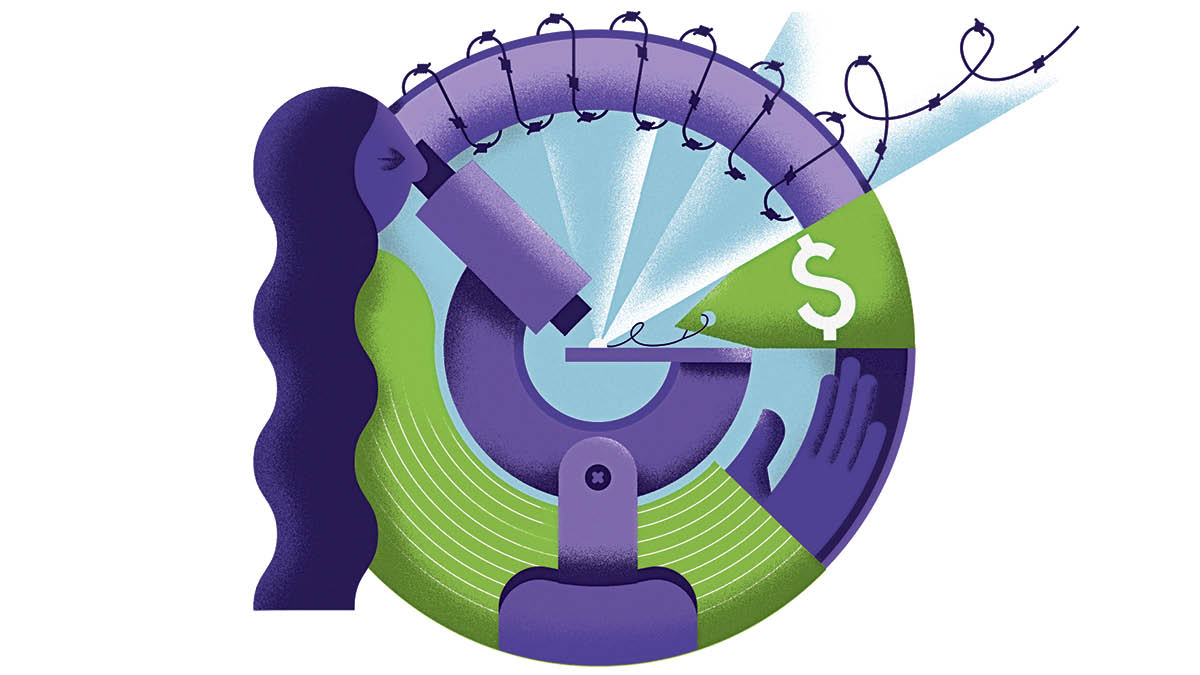
In early-December, just weeks before AstraZeneca’s coronavirus vaccine began receiving regulatory approval around the world, the Cambridge-headquartered drugmaker agreed a $39-billion deal to buy US biotech firm Alexion.
The size of the transaction was driven, in part, by Alexion’s pipeline of rare blood disease treatments and its blockbuster drug Soliris. Such medicines are often the driver of bumper mergers and acquisitions in the pharmaceutical industry because of the power of patents, a type of intellectual property (IP) protection that prevents others from copying a product and selling their own version of it for a set number of years, typically two decades.
“Patents are very common in the pharmaceutical industry,” says Michael Gavey, head of the London IP group at Simmons & Simmons. “Drugs require a lot of skill and effort to develop, and take years to get through pre-clinical and clinical trials before they can receive marketing approval, costing many hundreds of millions of pounds, so companies rely on patents to protect their investment.”
The telecommunications industry is also dependent on patents to protect their products from copycats. Apple, for instance, spent seven years locked in a patent dispute with Samsung, accusing its South Korean rival of “slavishly” copying the design of the iPhone.
“Increasingly, the value of a business is locked up in its technology, and to protect the business and also have the opportunity to extract value from any technical advances it may have invented, it’s vital to protect inventions with patents,” says Simon Ayrton, partner at IP specialists Powell Gilbert.
While many companies apply for patents to protect their products, there are other ways businesses can leverage the value of those patents, says Simone Frattasi, head of global IP at transport and logistics company A.P. Moller-Maersk.
For technology companies, patents can be a form of risk mitigation. For example, if a third party makes a claim for patent infringement, then there may be an opportunity for cross-licensing if that third party is also infringing one of the alleged infringer’s patents. Some companies may also have a number of patents they intend to sell or monetise through licensing agreements, rather than develop products themselves.
Digital transformation trends also mean some traditional businesses are having to rethink how they manage their IP. Frattasi says Maersk no longer just considers itself a container shipping company, it is also becoming a technology company, with many of its new innovations relating to software development.
“Suddenly the typical competitor is not another sea carrier, but it could be a technology company operating in the same space with a very large patent portfolio,” he says. “That changes the level of IP risk.”
As well as avoiding the risk of infringing other patents, one of the main challenges companies face when filing a patent application is ensuring they offer sufficient protection for their inventions. This means it is crucial to get the drafting right.
“If your claims are too broad then your patent might not be granted or it may be held invalid. But if you draft too narrowly and don’t properly capture your invention then your patent coverage won’t be adequate and you will fail to realise the commercial value of your invention,” says Gavey.
Companies that are filing patents also need to be wary of non-practising entities, someone who owns a patent but doesn’t produce any products, sometimes referred to as “patent trolls”.
Ayrton says while the term “troll” often implies somebody who is trying to game the patent system, non-practising entities include a wide-range of patent holders, such as universities that have invested in research and now own valuable patent rights they want to license.
“That’s not to say there aren’t unscrupulous trolls out there who know their rights may not be valid if they are ever challenged,” he says. “They typically threaten infringement proceedings against lots of people, but generally accept modest royalty payments on the basis that they don’t want to make it economically viable for someone to contest the validity of the patent in court.”
Given that most patents expire after 20 years, businesses also need to think about how to continue protecting their products once a patent runs out.
“One way is to look to file more patents for newer features that are related to the product, but it also relates to other IP. You have to invest in developing a brand and associating the brand with your successful product so ultimately that can carry the market share you’ve built up forward, then you don’t have such a cliff-edge effect when the patent expires,” says Chris de Mauny, senior associate at Bird & Bird.
Take Dyson as an example. While its bagless vacuum cleaner concept is no longer protected by a patent, its brand reputation built on the success of that innovation means it still has a competitive advantage in the bagless vacuum cleaner market, says de Mauny.
This underscores the importance of having a diversified IP portfolio that doesn’t rely only on patents.
“As powerful as patents are, they should not be considered in isolation,” says Andrew Pitts, patent attorney at Mewburn Ellis. “Patents can be effectively supplemented by other intellectual property rights that are usually cheaper to obtain or arise automatically. For example, while a patent protects the way a product works, design rights can sometimes also be used to protect the appearance of the same product.”
Some companies are also starting to develop more trade secrets rather than mechanically filing patent applications for their inventions, says Frattasi.
“If you think about inventions that are undetectable, maybe an algorithm in a piece of software, keeping it a secret may be a better option than disclosing that information,” he says.
